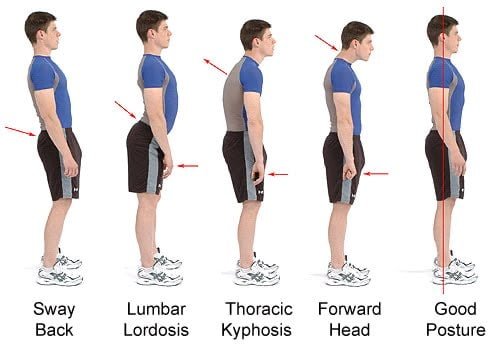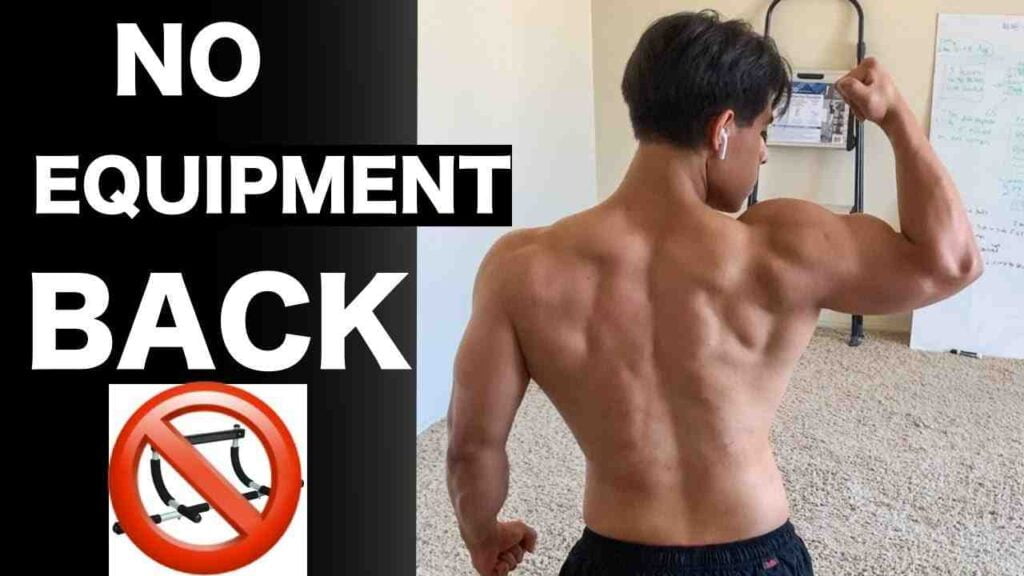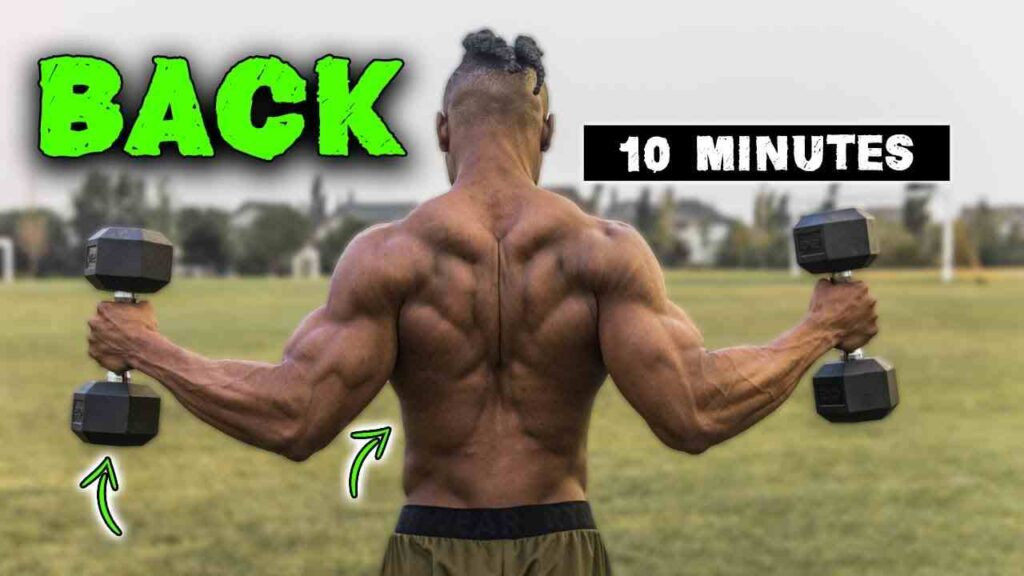When it comes to sculpting a strong and balanced upper body, diversity in exercise selection is key. Among the myriad of movements available to fitness enthusiasts, the chest supported row stands out as a formidable exercise that promises to target the back muscles with precision. But what about the biceps? Often, we find ourselves questioning the efficacy of compound movements in working those muscles that aren’t the primary focus. In this article, we delve into the chest supported row—a staple in back training—to uncover its impact on the biceps. Does it merely support the motion, or do the biceps actively contribute to the rowing symphony?
Introduction to Chest Supported Rows
Chest supported rows is a popular strength training exercise primarily targeting the muscles of the upper back, including the latissimus dorsi, rhomboids, and rear deltoids. This exercise is typically performed using a specialized piece of equipment called a chest-supported row machine or a bench set at an incline.
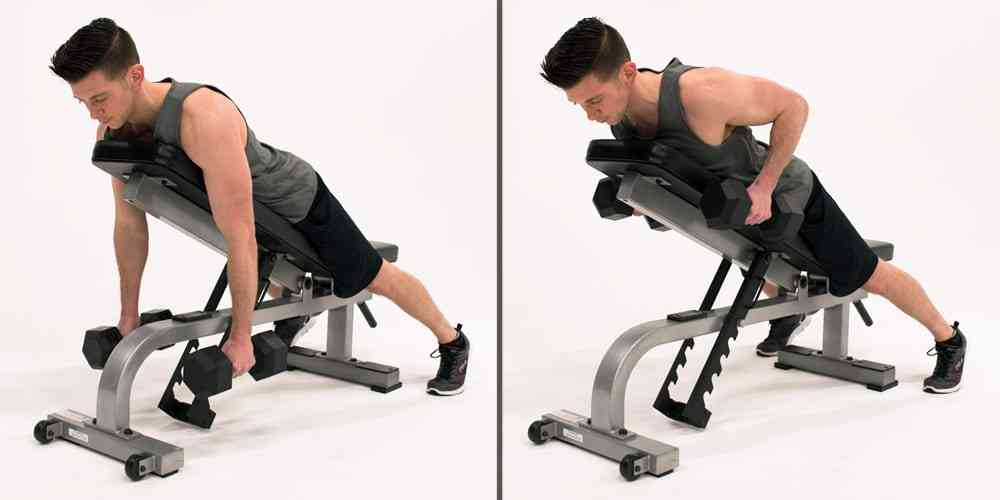
Here’s how chest supported rows are typically performed:
- Setup: Begin by adjusting the chest-supported row machine or incline bench to the appropriate height and angle. Ensure that when lying face down on the bench, your chest is comfortably supported and your arms can hang straight down toward the floor.
- Grip: Grasp the handles of the rowing apparatus with an overhand grip (palms facing down) or an underhand grip (palms facing up), depending on your preference and the design of the equipment. Your hands should be positioned slightly wider than shoulder-width apart.
- Starting Position: Lie face down on the chest-supported bench with your chest firmly pressed against the padding. Your feet should be flat on the ground for stability. Allow your arms to hang straight down toward the floor, holding onto the handles with your chosen grip.
- Execution: Initiate the movement by retracting your shoulder blades and pulling the handles toward your torso in a controlled manner. Keep your elbows close to your body as you pull the handles toward your lower ribs or upper abdomen, depending on the specific variation of the exercise and your individual range of motion.
- Peak Contraction: Squeeze your shoulder blades together at the peak of the movement to maximize activation of the target muscles in the upper back.
- Return to Starting Position: Slowly extend your arms back to the starting position, maintaining tension in the muscles of the upper back throughout the movement. Avoid fully straightening your arms at the bottom to keep tension on the muscles.
- Repeat: Perform the desired number of repetitions, focusing on maintaining proper form and control throughout the exercise.
- Variations: There are several variations of chest supported rows, including different grip widths, hand positions, and equipment options. Experiment with these variations to target different areas of the back and challenge your muscles in new ways.
SHOP FOR THE ADJUSTABLE DUMBBELL SET ON AMAZON
By performing chest supported rows with proper form and technique, you can effectively target the muscles of the upper back while minimizing strain on the lower back. This exercise is commonly included in strength training routines aimed at improving back strength, posture, and overall upper body development.
Anatomy of the Muscles Involved
Understanding the anatomy of the muscles involved in chest supported rows is crucial for comprehending how the exercise works and which muscles are primarily targeted. Here’s a breakdown of the key muscles involved:
Latissimus Dorsi (Lats)

The latissimus dorsi, often referred to as the “lats,” are the largest muscles in the back. Originating from the lower spine, iliac crest, and ribs, the lats extend upward and diagonally to insert into the upper arm bone (humerus). The primary function of the lats is shoulder extension, which involves pulling the upper arms down and back toward the body from an overhead position.
Rhomboids
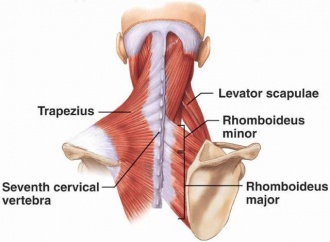
The rhomboids are located between the shoulder blades (scapulae) and the spine. They consist of two muscles: the rhomboid major and the rhomboid minor. The rhomboids retract the scapulae, bringing them closer together toward the spine. During chest supported rows, the rhomboids play a crucial role in stabilizing the scapulae and assisting with the pulling motion.
Trapezius (Upper and Middle Fibers)
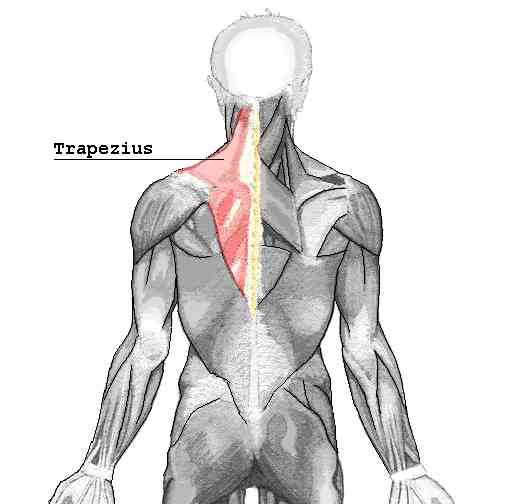
The trapezius is a large triangular-shaped muscle that spans the upper back and neck. It consists of three parts: the upper fibers, middle fibers, and lower fibers. During chest supported rows, the upper and middle fibers of the trapezius are engaged to stabilize the shoulder blades and assist with the pulling motion.
Posterior Deltoids
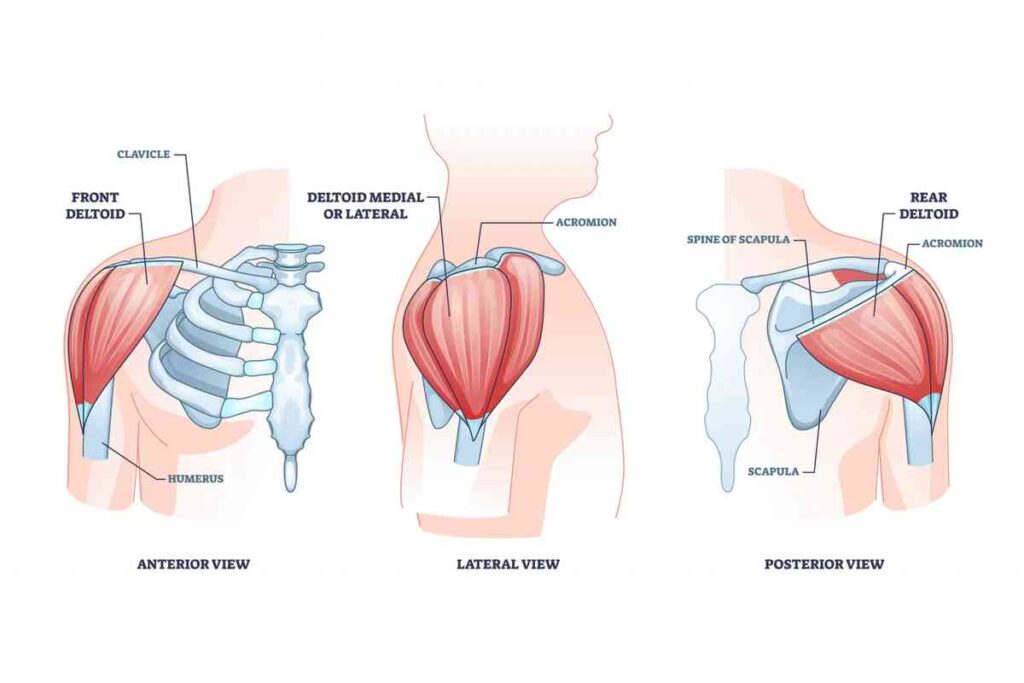
The posterior deltoids are located on the back of the shoulders. While not the primary focus of chest supported rows, the posterior deltoids are activated to a certain extent as they assist with shoulder extension and stabilization during the exercise.
Biceps Brachii
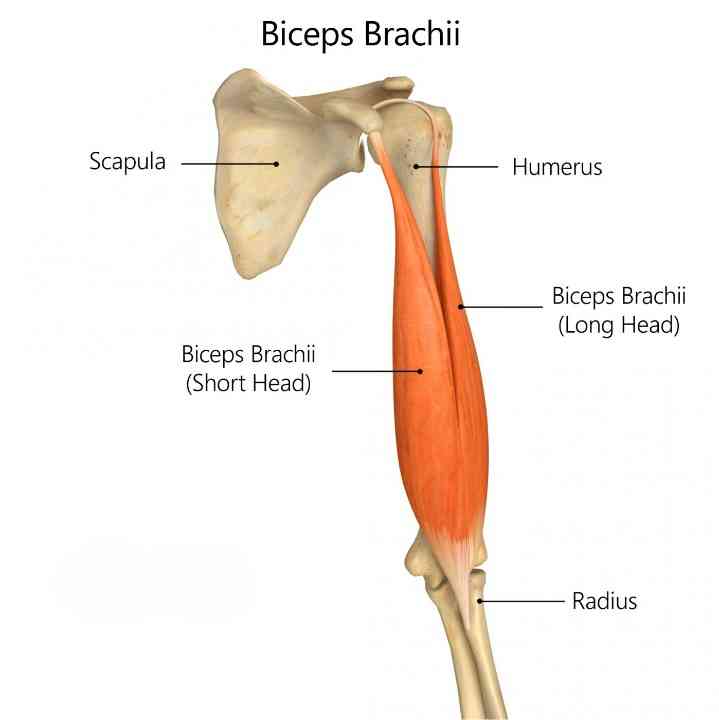
Although not a primary muscle targeted during chest supported rows, the biceps brachii, commonly known as the biceps, play a secondary role in assisting with the pulling motion. The biceps are located on the front of the upper arm and are primarily responsible for elbow flexion (bending the elbow). During chest supported rows, the biceps are activated to stabilize the elbow joint and assist in pulling the weight toward the body.
SHOP FOR THE RESISTANCE BAND ON AMAZON
Understanding the anatomy of these muscles provides insight into how chest supported rows engage various muscle groups in the back, shoulders, and arms.
Role of the Biceps
In the chest supported row exercise, the primary focus is on targeting the muscles of the upper back, including the latissimus dorsi, rhomboids, and trapezius. However, the biceps also play a significant role in assisting with the movement and providing stability throughout the exercise.
Here’s a breakdown of the role of the biceps in the chest supported row:
- Stabilization: One of the key roles of the biceps during chest supported rows is to provide stabilization at the elbow joint. As you pull the weight toward your body, the biceps engage to stabilize the elbow and support the movement.
- Assisting in the Pulling Motion: While the primary movers in the chest supported row are the muscles of the upper back, including the lats and rhomboids, the biceps act as secondary movers. They assist in the pulling motion by flexing the elbow and contributing to the overall movement pattern.
- Isometric Contraction: During the eccentric (lowering) phase of the exercise, the biceps undergo an isometric contraction to control the descent of the weight. This helps maintain tension in the muscles and control the movement throughout the entire range of motion.
- Grip Strength: The biceps also play a role in maintaining grip strength during chest supported rows. As you hold onto the handles or barbell, the biceps contract to stabilize the wrists and prevent them from flexing or extending excessively.
While the biceps are not the primary muscles targeted during chest supported rows, their involvement is essential for maintaining proper form, stability, and control throughout the exercise. Additionally, depending on grip width and hand positioning, you can slightly alter the emphasis on the biceps, potentially increasing their activation to a small extent.
It’s important to note that individuals with weaker biceps or those specifically looking to target their biceps may choose to incorporate additional exercises that isolate and emphasize biceps development, such as various types of curls.
Benefits of Chest Supported Rows
Chest supported rows offer a range of benefits for both novice and experienced lifters. Here are some key advantages of incorporating this exercise into your workout routine:
- Reduced Lower Back Strain: By supporting the chest on an incline bench, the exercise minimizes the stress on the lower back, making it a safer option for those with back concerns.
- Improved Posture: Regularly performing chest supported rows can help strengthen the muscles that support the spine, contributing to better posture.
- Muscle Isolation: This exercise allows for better isolation of the upper back muscles, as the chest support prevents the use of momentum, ensuring that the targeted muscles do the work.
- Unilateral Training: Using dumbbells for chest supported rows promotes unilateral training, which can help address muscle imbalances by ensuring both sides of the body work equally.
- Increased Muscle Engagement: The stable position allows lifters to focus on squeezing and engaging the back muscles effectively throughout the movement.
- Versatility: Chest supported rows can be performed with various types of free weights and can be easily modified to target different muscle groups or accommodate different skill levels.
- Safe Progression: For beginners, it’s an excellent way to learn proper rowing techniques and shoulder blade retraction without taxing the spine. For seasoned lifters, it allows for pulling heavier weights with isolated movement.
Incorporating chest supported rows into your training can lead to serious gains in back strength and size, and when performed with proper technique, it can also engage the biceps effectively. It’s a versatile exercise that can enhance your overall upper body workout regimen.
Variations and Grip
Different variations of chest supported rows can indeed impact biceps activation to varying degrees. Here’s a breakdown of some key variations and their potential effects on biceps engagement:
- Grip Width: Altering the grip width during chest supported rows can influence biceps activation. A wider grip typically places more emphasis on the back muscles, particularly the lats and rhomboids, while a narrower grip may increase biceps involvement. This is because a narrower grip tends to reduce the lever arm of the exercise, placing more stress on the biceps to pull the weight.
- Hand Positioning: In addition to grip width, the positioning of the hands can also affect biceps activation. For example, using a supinated (underhand) grip during chest supported rows can increase biceps engagement compared to a pronated (overhand) grip. The supinated grip places the biceps in a more mechanically advantageous position, allowing them to contribute more to the pulling motion.
- Range of Motion: Manipulating the range of motion of the exercise can impact which muscles are emphasized. Performing chest supported rows with a full range of motion, where the elbows are fully extended at the bottom of the movement and pulled back as far as possible at the top, can help maximize biceps activation. Conversely, limiting the range of motion may reduce biceps involvement, focusing more on the back muscles.
- Elbow Position: The position of the elbows relative to the torso can also influence biceps activation during chest supported rows. Keeping the elbows close to the body throughout the movement, rather than allowing them to flare out, can increase biceps engagement. This is because a more tucked elbow position places greater emphasis on the pulling action of the biceps.
- Resistance Type: Whether you’re using free weights, such as dumbbells or a barbell, or a machine for chest supported rows can impact biceps activation. Free weights typically require more stabilization and coordination, which can engage the biceps to a greater extent compared to machine-based variations where stability is provided.
Overall, while chest supported rows primarily target the back muscles, incorporating variations that manipulate grip width, hand positioning, range of motion, elbow position, and resistance type can help increase biceps activation. However, it’s essential to balance these variations with proper form and technique to avoid compromising overall muscle development and risking injury. Experimenting with different variations and paying attention to how your body responds can help you determine which variations best target the biceps while still effectively engaging the back muscles.
Individual Variability
When discussing individual variability in the context of chest supported rows and biceps activation, it’s crucial to highlight that not everyone will experience the same level of biceps engagement during this exercise. Here are some factors to consider:
- Strength Levels: Individuals vary in their strength levels, which can influence how much resistance they can handle during chest supported rows. Stronger individuals may be able to lift heavier weights, potentially leading to greater biceps activation compared to those with lower strength levels.
- Muscle Imbalances: Some individuals may have pre-existing muscle imbalances that affect their ability to effectively engage certain muscle groups during exercises. For example, if someone has weak biceps relative to their back muscles, they may struggle to fully activate their biceps during chest supported rows.
- Technique Variations: Different people may naturally adopt slightly different techniques when performing chest supported rows. These variations in form can impact which muscles are emphasized during the exercise, including the biceps. Factors such as grip width, hand positioning, and range of motion can all influence biceps activation.
- Biomechanical Differences: Each person’s body has unique biomechanics, such as limb lengths and joint angles, that can affect how muscles are recruited during exercises like chest supported rows. Individuals with biomechanics that favor biceps involvement may experience greater activation in the biceps compared to others.
- Training Experience: The level of experience and familiarity with the exercise can also impact individual variability. Novices may initially struggle to engage the correct muscles effectively, including the biceps, while more experienced lifters may have developed better mind-muscle connections.
- Feedback and Adjustments: It’s important for individuals to pay attention to how their body responds to chest supported rows and make adjustments as needed. This could involve experimenting with different grips, focusing on squeezing the biceps at the top of the movement, or adjusting the positioning of the bench to optimize biceps activation.
- Progressive Overload: Regardless of individual variability, consistent progression and overload are key principles for muscle growth. Over time, individuals can increase the resistance or volume of their chest supported rows to continue challenging their muscles, including the biceps, and promote further development.
Practical Recommendations
To maximize biceps activation during chest supported rows, individuals can follow these practical recommendations:
- Adjust Grip Width: Experiment with different grip widths to find the position that maximizes biceps involvement. A narrower grip may place more emphasis on the biceps, especially if using an underhand (supinated) grip.
- Focus on Elbow Positioning: Concentrate on keeping the elbows close to the body throughout the movement. Avoid allowing the elbows to flare out excessively, as this can shift the emphasis away from the biceps and onto the back muscles.
- Use a Supinated Grip: Utilize a supinated grip (palms facing up) during chest supported rows to increase biceps activation. This grip variation places the biceps in a more mechanically advantageous position, leading to greater involvement during the pulling phase.
- Control the Eccentric Phase: Pay attention to the lowering (eccentric) phase of the exercise. Slow down the descent of the weight and focus on maintaining tension in the biceps throughout the movement. This controlled eccentric contraction can enhance muscle activation.
- Squeeze at the Top: At the top of the rowing motion, focus on squeezing the biceps forcefully for a brief moment before lowering the weight back down. This peak contraction can help maximize biceps activation.
- Mind-Muscle Connection: Develop a strong mind-muscle connection with the biceps during chest supported rows. Concentrate on feeling the biceps muscles working throughout the entire range of motion, rather than just going through the motions.
- Adjust Range of Motion: Modify the range of motion to emphasize biceps activation. Instead of fully extending the arms at the bottom of the movement, maintain a slight bend in the elbows to keep tension on the biceps.
- Controlled Repetitions: Perform each repetition with strict form and controlled movements. Avoid using momentum to swing the weight, as this can reduce biceps activation and increase the risk of injury.
- Progressive Overload: Gradually increase the resistance used in chest supported rows over time to continually challenge the biceps muscles and promote growth. However, prioritize proper form and technique to ensure optimal activation.
- Variations: Incorporate variations of chest supported rows that specifically target the biceps, such as incline chest supported rows or using resistance bands for added tension.
By implementing these practical recommendations, individuals can effectively target and maximize biceps activation during chest supported rows, leading to greater muscle growth and development over time.
Research and Expert Opinions
There have been several studies and expert analyses on the activation of the biceps during chest supported rows. Here are some key findings:
- EMG Analysis: An EMG (electromyography) analysis by Bret Contreras tested various back and biceps exercises, including the chest supported row. The study found that certain rowing exercises can indeed activate the biceps significantly.
- Muscle Activation: According to BarBend, the chest-supported row is an exercise that targets the biceps and back muscles effectively. It provides built-in stability, allowing for focused muscle activation without taxing the spine.
- Exercise Comparison: The International Journal of Strength and Conditioning compared different rowing techniques and found that biceps brachii (BB) activation was greater during supinated, neutral, and 90° grip techniques.
- Expert Opinion: The Barbell’s analysis suggests that exercises like chin-ups and parallel-grip pull-ups, which were tested alongside rows, may pre-exhaust the lats and force the biceps to work harder, indicating a significant biceps activation during rowing movements.
These sources provide a comprehensive view of how the biceps are engaged during chest supported rows, with EMG studies and expert opinions confirming their effectiveness in activating the biceps muscle group.
FAQs
Q 1. What is the correct form for performing a Chest Supported Row?
Ans. Start by adjusting the bench to a comfortable height. Position yourself on the bench with your chest against the pad and feet firmly on the ground. Grab the handles with an overhand grip, keeping your arms fully extended. Pull the handles towards your torso while squeezing your shoulder blades together. Slowly return to the starting position. Remember to keep your back straight and avoid using momentum to lift the weight.
Q 2. Can beginners perform Chest Supported Rows?
Ans. Yes, beginners can perform Chest Supported Rows. It’s a great exercise to learn as it promotes proper form and reduces the risk of injury. Beginners should start with light weights and focus on mastering the technique.
Q 3. How can I modify the Chest Supported Row if it’s too challenging?
Ans. If the exercise is too challenging, you can reduce the weight or perform the exercise with one arm at a time. This allows you to focus on the movement of each arm individually and can make the exercise more manageable.
Q 4. How often should I include Chest Supported Rows in my workout routine?
Ans. This depends on your fitness goals. If you’re looking to build strength and muscle, you might include this exercise in your routine 2-3 times per week. Always allow for at least one day of rest between workouts that target the same muscle group.
Q 5. What equipment do I need to perform Chest Supported Rows?
Ans. You’ll need a chest supported row machine for this exercise. If you don’t have access to one, you can also use a regular bench and a pair of dumbbells.
Q 6. What are some common mistakes to avoid when performing Chest Supported Rows?
Ans. Common mistakes include using too much weight, using momentum to lift the weight, not pulling the elbows back far enough, and not squeezing the shoulder blades together at the top of the movement.
Q 7. Are there any specific stretches or warm-up exercises recommended before performing Chest Supported Rows?
Ans. Yes, it’s important to properly warm up before any strength training exercise. This could include light cardio, dynamic stretches, or performing the exercise with light weight to warm up the muscles and joints.
Conclusion
In conclusion, the chest supported row is a multifaceted exercise that offers a plethora of benefits for those looking to enhance their upper body strength, particularly in the back. While it’s clear that the primary muscles worked are the lats, traps, and rhomboids, the biceps also play a supporting role in this compound movement.
The engagement of the biceps, although secondary, is significant enough to contribute to overall arm development. However, for those aiming to specifically target and isolate the biceps, incorporating additional exercises like curls is recommended. The chest supported row remains a valuable component of a well-rounded fitness regimen, promoting muscle balance, proper posture, and a strong, sculpted back.

Good day, and welcome to Fitthour. My name is Shubham Vijay, and I am a certified personal trainer and nutrition coach with 6 years of experience in the fitness industry. At Fitthour, we specialize in types of training, such as strength training, cardio, or HIIT, and our mission is to help clients achieve their fitness goals and improve their overall health.

